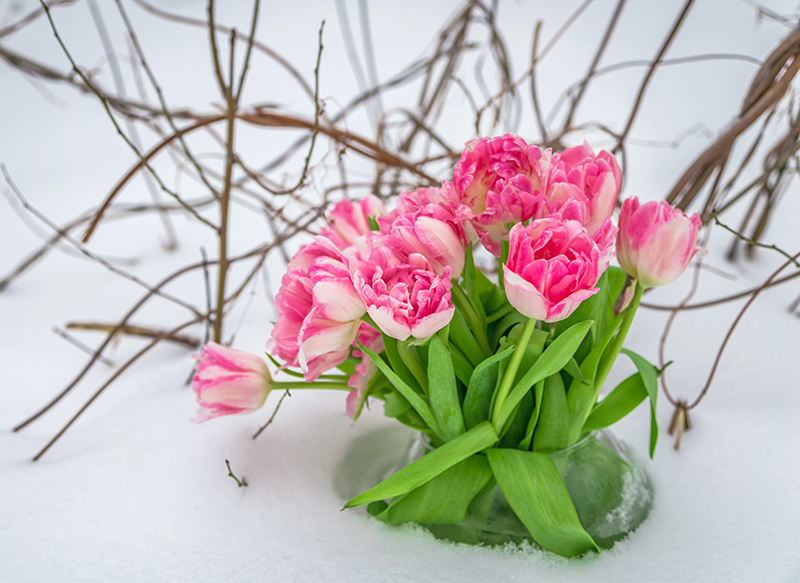Nurturing Orchids: Top Tips for Every Home
Posted on 13/08/2025
Nurturing Orchids: Top Tips for Every Home
Are you fascinated by the exotic beauty of orchids yet hesitant to bring one home? Many people believe these breathtaking flowers are difficult to care for, but with the right guidance, nurturing orchids can be both rewarding and enjoyable. In this comprehensive article, we'll explore practical tips, essential techniques, and expert advice to ensure your orchids thrive and blossom--transforming your space with their dazzling colors and mysterious elegance.

Understanding Orchids: An Overview
Orchids are among the largest and most diverse plant families on the planet, boasting over 25,000 species and more than 100,000 hybrids. They come in various shapes, sizes, and colors, captivating gardeners and plant lovers worldwide. Orchid care at home doesn't have to be daunting; with a fundamental understanding of their natural environment and a few effective strategies, you can enjoy lush, healthy orchids year-round.
- Phalaenopsis (Moth Orchids) - One of the easiest orchids to grow indoors, popular for its long-lasting blooms
- Cattleya - Known for their fragrant and vividly colored flowers
- Dendrobium - Versatile orchids that require a bit more attention with watering
- Oncidium - Nicknamed "Dancing Ladies," they thrive in bright homes with good ventilation
Let's delve deeply into orchid nurturing tips every home gardener should know!
Choosing the Right Orchid for Your Home
Selecting the ideal orchid variety is the first step in successful orchid care. Some are hardier and more forgiving, making them great for beginners.
Factors to Consider When Selecting an Orchid
- Lighting in your home: Some orchids require bright, indirect sunlight while others thrive in lower light.
- Humidity levels: Orchids generally prefer humid environments, but some varieties are more adaptable.
- Blooming period: Choose an orchid species that suits your preferences for flower longevity and frequency.
For most homes, Phalaenopsis orchids are a fantastic choice for beginners, as they're resilient, flower several times a year, and flourish in average indoor conditions.
Optimal Light: The Secret Behind Lush Blooms
Light is crucial for nurturing healthy orchids. Without sufficient light, orchids may grow weak stems and produce fewer or no blooms.
Top Lighting Tips
- Indirect sunlight: Most orchids prefer bright, filtered light. An east or west-facing window works well.
- Avoid direct sun: Too much direct sunlight can scorch the leaves. Use sheer curtains to diffuse intense rays.
- Artificial lighting: If natural light is limited, use LED grow lights designed for indoor plants.
If you notice dark green leaves, your orchid may not be getting enough light. Conversely, yellowish or red-tinted leaves might indicate too much sun.
The Right Potting Mix: Foundation for Orchid Health
Unlike traditional houseplants, orchids don't grow in regular soil. They require a potting mix that provides air to their roots and mimics their natural epiphytic environment.
Best Medium for Nurturing Orchids
- Bark chips: Allow plenty of air around the roots
- Sphagnum moss: Retains moisture, perfect for homes with lower humidity
- Perlite or charcoal: Improves drainage
Always use a specially formulated orchid potting mix to prevent root rot and encourage strong growth.
Watering Orchids: Striking the Right Balance
One common challenge in caring for orchids is getting the watering routine right. Overwatering is the most frequent cause of orchid decline.
How to Water Orchids Effectively
- Check before watering: Press your finger into the potting medium; water only when the top inch feels dry.
- Morning is best: Watering early allows excess moisture to evaporate, reducing the risk of rot and fungal disease.
- Soak, don't sprinkle: Water thoroughly so that excess flows out the drainage holes, then allow the pot to drain fully.
- Reduce frequency in winter: Orchids need less water during their resting phase.
Remember, orchid roots need air. Never let your orchid's pot sit in a dish of standing water.
Humidity and Airflow: Creating an Orchid Oasis
Most orchids are native to humid, tropical regions. Dry air can cause buds and flowers to drop prematurely.
Easy Ways to Increase Humidity
- Group plants together: This naturally increases humidity near your orchids.
- Use a humidity tray: Fill a shallow tray with pebbles and water, and place your orchid pot on top (not touching the water).
- Mist with caution: Lightly mist the leaves but avoid wetting the flowers or letting water collect on the leaves overnight.
- Consider a room humidifier: Especially helpful during dry winter months.
In addition, good air circulation helps prevent mold and disease. Use a small fan on a low setting to keep air gently moving around your orchid.
Fertilizing Orchids: Feeding for Fabulous Flowers
To encourage robust growth and vibrant blossoms, your orchid needs regular feeding. However, less is often more when it comes to orchid fertilizer.
Fertilizing Guidelines
- Use a balanced fertilizer: Look for a formula labeled 20-20-20 or specifically for orchids.
- "Weakly, weekly": Dilute fertilizer at one-quarter strength and apply every week during the growing season.
- Reduce during dormancy: Feed less when your orchid isn't actively growing or blooming.
Tip: Flush the potting mix with pure water once a month to remove any built-up fertilizer salts, which can damage roots.
Repotting Orchids: When and How to Do It
Repotting is vital for a thriving orchid, but timing and method are key.
When Should You Repot?
- Every 1-2 years, or when the potting mix has broken down
- If roots are crawling over the edge of the pot or appear overcrowded
- If you notice sour, musty smells indicating rot
How to Repot an Orchid
- Choose a slightly larger pot with drainage holes
- Gently remove old potting mix and dead roots
- Settle the orchid into fresh mix and water lightly
Never use typical houseplant soil for orchids!
Pruning and Grooming: Orchid Maintenance Essentials
Regular grooming keeps your orchid healthy and attractive. Pruning also encourages new flower spikes and prevents disease.
Best Practices for Pruning Orchids
- Remove dead or yellow leaves with sterile scissors
- After flowering, trim the old flower spike just above a node to encourage reblooming (for Phalaenopsis orchids)
- Cut away any roots that are mushy or blackened
*Always sterilize your tools in between orchids to avoid spreading disease.*
Common Orchid Problems & Solutions
Orchids are hardy plants but can occasionally show signs of stress. Here's how to address frequent issues:
- Wrinkled leaves: Usually caused by underwatering or severe root loss. Check the roots for health and adjust watering.
- Spotted leaves: This can signal fungal disease. Prune affected leaves and improve air circulation.
- No blooms: Often due to inadequate light or overfertilization. Move your orchid to a brighter spot and cut back on feeding.
- Pests (mealybugs, scale, spider mites): Remove pests with insecticidal soap or rubbing alcohol on a cotton swab.
*Be proactive! Early detection and gentle intervention are the keys to a healthy orchid.*
Encouraging Re-Blooming: Getting Your Orchid to Flower Again
A common question among orchid enthusiasts is, "Why won't my orchid bloom again?" The answer often lies in adjusting your care routine after the initial flowering.
Top Methods to Promote Re-Blooming
- Provide a temperature drop: Many orchids set flower spikes when nighttime temperatures are about 10?F (5?C) lower than daytime temperatures for a few weeks.
- Resume regular feeding and watering: Support new growth with a light but steady hand.
- Be patient: Some orchids need several months of rest before re-blooming. Check the roots and leaves regularly for signs of activity.
Tip: For Phalaenopsis orchids, cut back the old flower spike just above a healthy node after blooming, which may encourage a side shoot.
Orchid Myths & Misconceptions Explained
There are many myths about nurturing orchids at home. Let's debunk a few:
- Myth: All orchids are hard to care for.
Truth: Many common types, such as Phalaenopsis, are easy and rewarding, even for beginners. - Myth: Orchids only bloom once.
Truth: With good care, most orchids will bloom year after year--some even multiple times a year! - Myth: Orchids need misting daily.
Truth: Excessive misting can cause fungal issues; focus on humidity instead.
Styling Your Home with Orchids: Design Inspiration
Beyond their beauty, nurturing orchids allows you to elevate your home's atmosphere. Place them:
- As a stunning centerpiece on a dining or coffee table
- On a windowsill for a splash of color
- Grouped with other houseplants for a mini tropical oasis

Frequently Asked Questions about Orchid Care
How often should I water my orchid?
It depends on variety, potting medium, and your home's humidity. In general, water every 7-10 days and adjust based on your plant's needs.
What is the best temperature for orchids?
Most orchids prefer daytime temperatures of 65-75?F (18-24?C) and slightly cooler nights, mirroring their tropical origins.
Why do my orchid's leaves look limp?
Limp leaves often indicate root problems, either from overwatering, underwatering, or a potting mix that's too compact. Check your orchid's roots and adjust care as needed.
Can I care for orchids without a green thumb?
Yes! Caring for orchids is much simpler than many believe. Start with beginner-friendly types, follow the tips above, and enjoy the process of learning and growing with your plant.
Conclusion: Cultivating Orchid Success at Home
With these top tips for nurturing orchids, you can create an environment where your plants not only survive, but truly thrive. Remember, even novice gardeners can experience the joy of vibrant blooms and lush foliage by understanding light, water, humidity, and the unique needs of each orchid species. Be patient, observant, and don't be afraid to experiment--a little care and attention goes a long way in transforming your living space with orchids' exquisite beauty.
Bring home an orchid today and let your journey in nurturing these enchanting plants begin!
- Experiment with different orchid types--each one offers a unique beauty!
- Remember: Success comes with practice and patient observation.
Looking for more orchid care advice and expert articles? Subscribe to our newsletter for the latest home gardening tips and inspiration!
Latest Posts
Deciphering the meanings behind birth month blossoms
Nurturing Orchids: Top Tips for Every Home
Enhance Your Environment with Vibrant Blooms
Unpacking the Symbolism and Colorful Meanings of Peony Flowers





